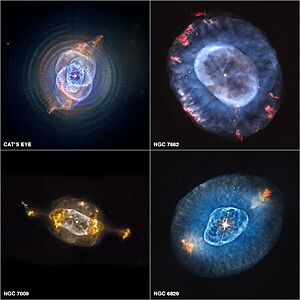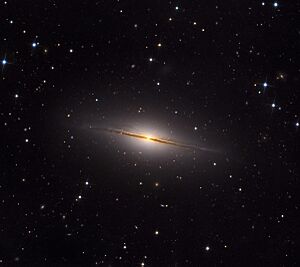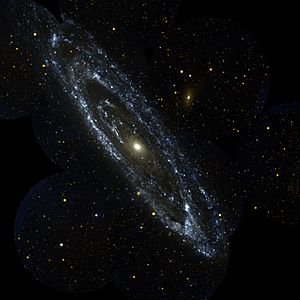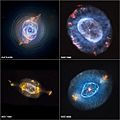New General Catalogue facts for kids

The New General Catalogue of Nebulae and Clusters of Stars is a huge list of objects you can see in space, like nebulae (giant clouds of gas and dust) and groups of stars. It's usually called NGC for short. This amazing list has 7,840 different objects! These are often called "NGC objects."
A person named John Louis Emil Dreyer put this catalogue together in 1888. It's still one of the most famous and important lists for anyone who loves looking at the night sky with a telescope, especially amateur astronomers.
Many of the observations for this catalogue came from the hard work of William Herschel and his son. Later, other lists called Index Catalogues (IC) I and II added even more objects, about 5,000 new ones, to this collection.
Objects in the Southern Hemisphere of the sky weren't studied as much as those in the Northern Hemisphere. John Herschel observed many of the Northern Hemisphere objects. The first New General Catalogue had a few small mistakes, but these were fixed in a special updated version called the RNGC.
What is NGC 2000.0?


NGC 2000.0 is basically a modern copy of the original NGC list. It was created in 1988 and uses updated coordinates for all the objects. These coordinates are based on a system called J2000.0, which helps astronomers find objects in the sky very precisely.
Images for kids
-
Four different planetary nebulae. Clockwise starting from the top left: NGC 6543, NGC 7662, NGC 6826, and NGC 7009.
See also
 In Spanish: Nuevo Catálogo General para niños
In Spanish: Nuevo Catálogo General para niños



